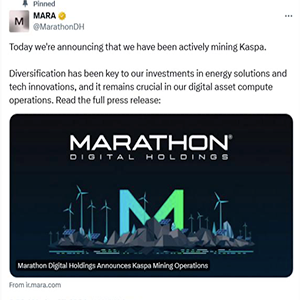Over the past two months, Kasplex, one of the Layer-2 protocol solutions for Kaspa, has made notable strides toward mainnet. Development has accelerated across multiple fronts: from GitHub activity to infrastructure rollouts and community growth.
Development Momentum
Kasplex’s GitHub shows active and focused progress. The main executor/indexer backend received over 40 commits in this period, introducing KRC-20 token issuance, indexing optimizations, and versioned software releases. The Kiwi SDK — a TypeScript-based developer toolkit — was open-sourced in May and is already live on npm, enabling easy integration of wallet and token features.
While the team remains small, their commit frequency and structured releases reflect a disciplined and technically capable group. Early signs of external developer engagement are emerging as repositories gain traction in the broader Kaspa developer community.
Major Milestones Achieved
Two major technical milestones marked this phase:
- KRC-20 Token Support — the indexer now supports issuance, transfers, and balance tracking, backed by an on-chain fee model.
- Kasplex zkEVM Testnet Launch — on May 30, Kasplex opened its public Layer-2 testnet, allowing anyone to deploy contracts, mint tokens, and explore dApp functionality tied to Kaspa.
This transition from closed development to open experimentation signals maturity and confidence in the protocol’s stability.
Community Engagement
Developer communications have been consistent, especially via the official Telegram group, which has grown to nearly 5,000 members. The team answers questions, provides updates, and supports early testers. Public tools like the testnet faucet and updated documentation have helped onboard the first wave of users.
Multiple third-party projects, including Zealous Swap (a DEX) and Kaspa Finance (a DeFi suite), are already testing deployments on Kasplex L2. These early dApps show that the ecosystem is taking shape — developers are not just watching, but building.
Roadmap Outlook
With the testnet now live, Kasplex is preparing for a mainnet launch in the coming months. In parallel, the team is expanding the protocol’s scope with:
- KRC-721 support for NFTs
- Atomic swaps and decentralized marketplaces
- Performance and sync improvements to the indexer
- A redesigned user-facing website with Layer-2 network data and stats
The long-term design goal remains clear: extend Kaspa’s capabilities without impacting L1 performance, using P2SH scripts, off-chain execution, and miner-aligned gas fees to preserve scalability.
Conclusion: Kasplex has moved from concept to real, functioning infrastructure. Code is being shipped, community tools are launching, and developers are already testing smart contract applications on Kaspa. The energy around Kasplex suggests that Kaspa’s long-awaited leap into smart contracts is not just coming — it has begun.


